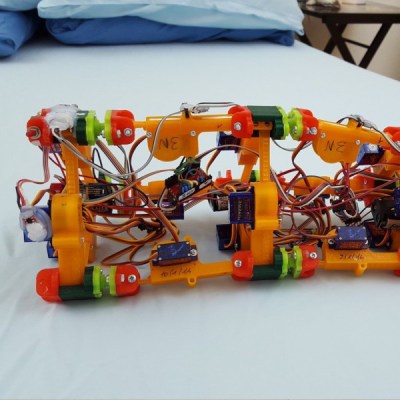What’s better than a caster? An omniwheel. These wheels are like a big wheel with little wheels at different angles that can roll in any direction. [Sonodera] built an omniwheel out of laser cut MDF. MDF–or Medium Density Fiberboard–makes up all the parts of the wheel. There’s no plastic or metal at all.
[Sonodera’s] wheel is more of a passive design like a caster. It would be possible to drive the wheel through the center in two directions, but the right-angle rollers are passive.
We’ve seen several robots with omniwheels before. In fact, this tripod-inspired robot also has passive rollers and the three-legged design takes advantage of them (the so-called Kiwi drive). Some schemes combine multi-directional wheels with conventional wheels (usually the standard wheels are in the center). There are other multi-directional wheel designs out there, including the Mecanum wheel. You can see a video of the MDF wheel in action, below.






 Version 1 of [Roger]’s robot is only semi-vermiform and is more of
Version 1 of [Roger]’s robot is only semi-vermiform and is more of 











